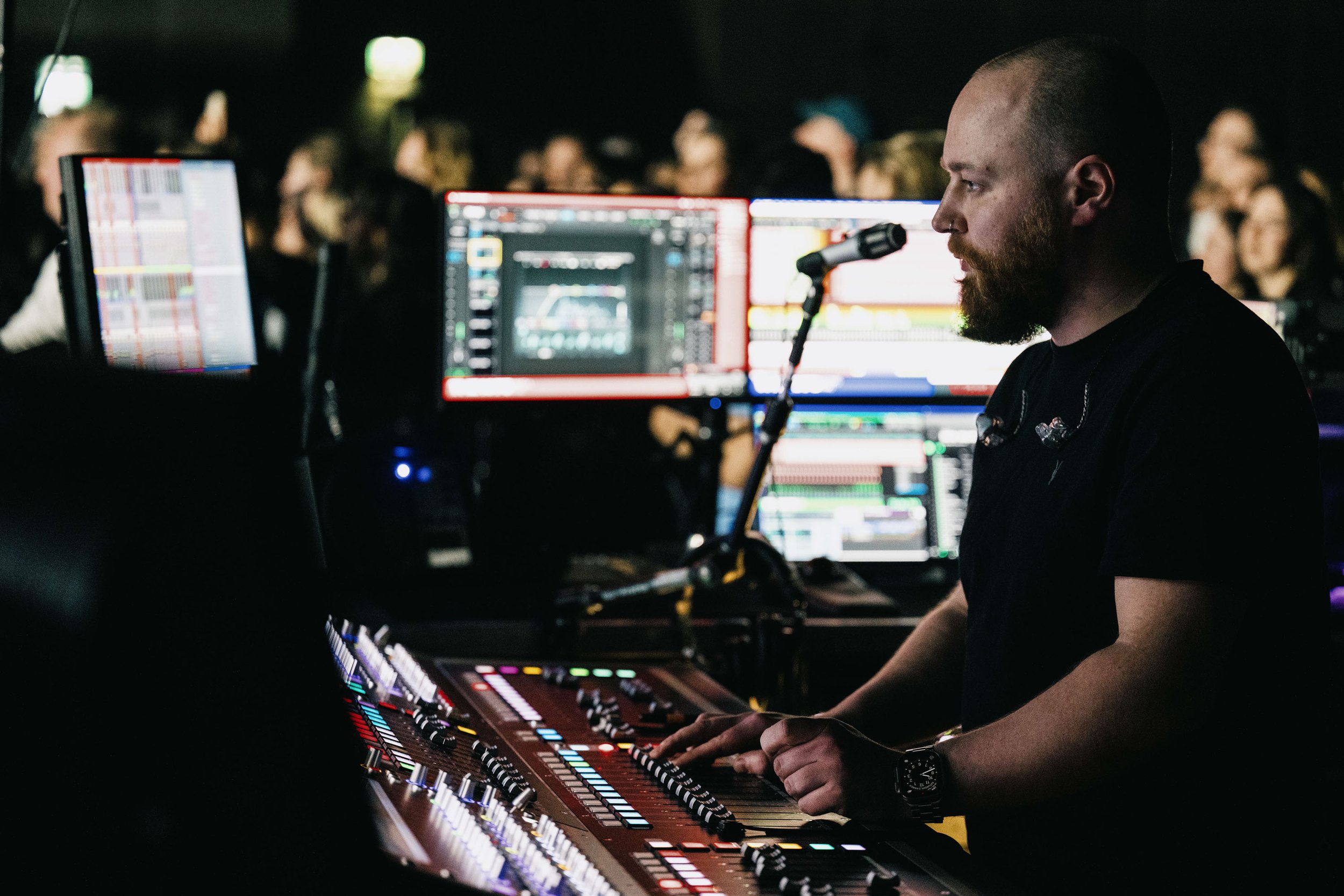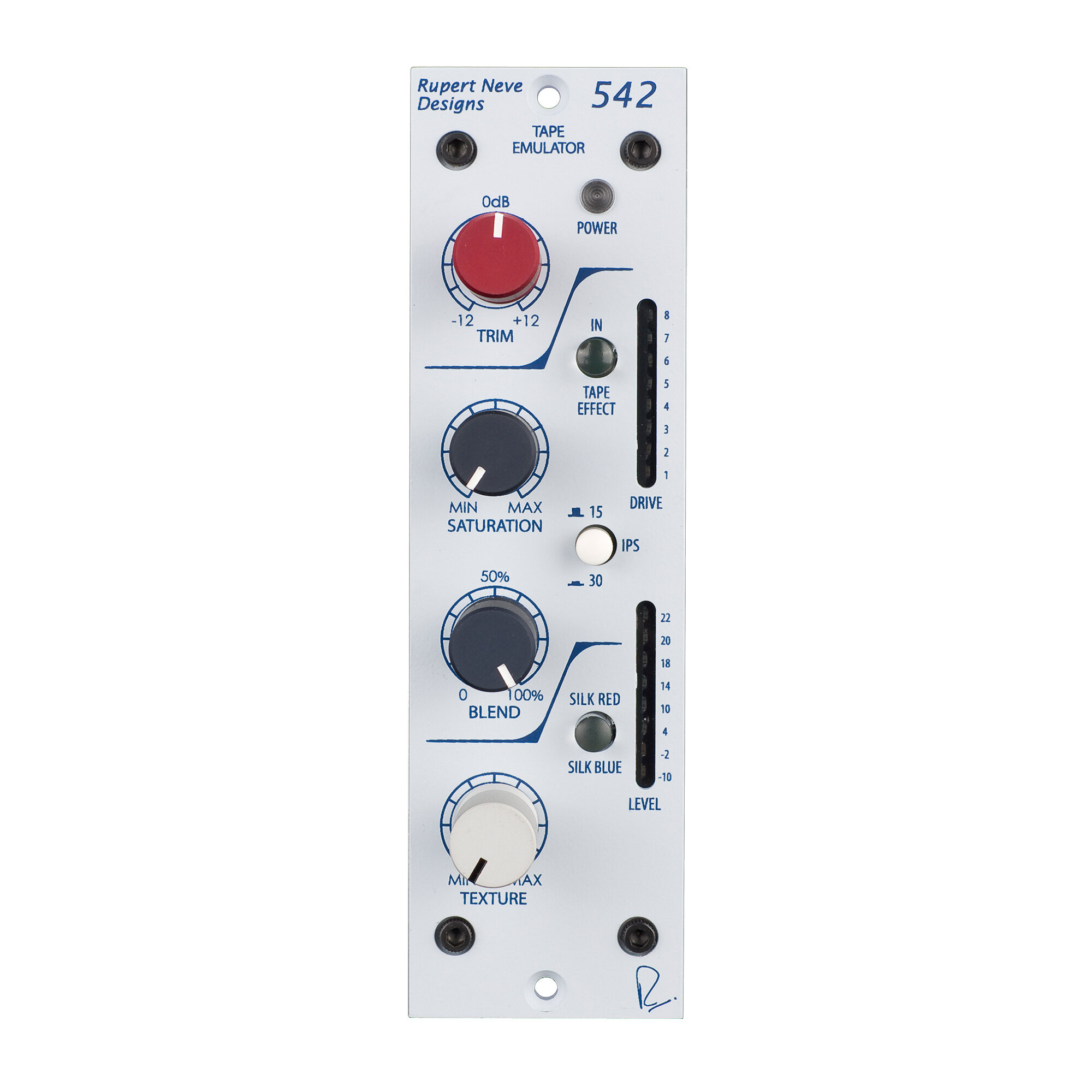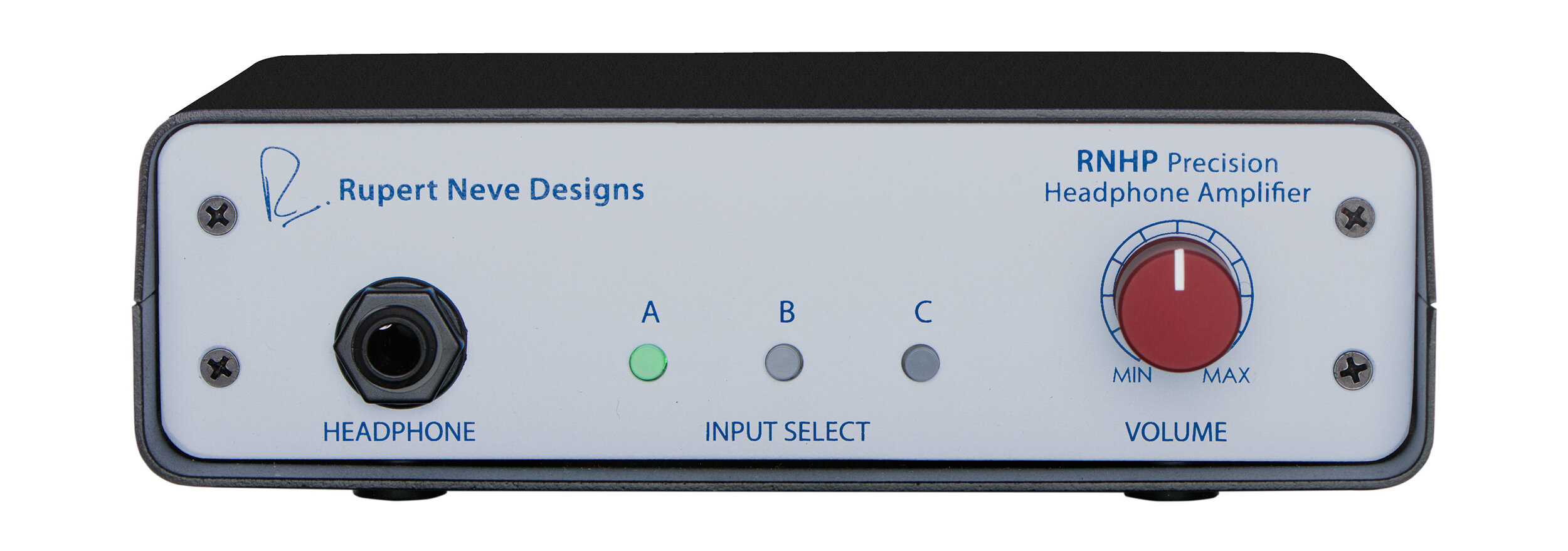Customer Spotlight: Lee McMahon
Can you please tell us who you are, a bit about your background, and what artists you work with?
I’m a freelance audio engineer, primarily working in live sound as FOH engineer, alongside a breadth of studio experience and broadcast facilitation. Over the past 12 years, I have gained extensive worldwide touring experience ranging from clubs to stadiums in a variety of roles with artists and projects spanning many genres including pop, rock, electronic and alternative. Artists I’ve worked with recently include The 1975, Pale Waves and Jehnny Beth.
What does the name Rupert Neve mean to you?
While Rupert Neve’s name and legacy is ubiquitous within the audio world, it also represents heritage and prestige; since the beginning of my career I have had the pleasure of working on his studio mixing consoles, microphone preamps and outboard processors through the various companies he was involved with – and with Rupert Neve Designs I can bring the sound of the studio on the road.
What was your first experience with Rupert Neve Designs equipment?
It started in 2016 when I got hold of my first RNDI, which became a staple for bass & acoustic guitars and I still use them where possible to this day - both live and the studio.
As I began to tour more, I was introduced to the 5045 Primary Source Enhancer and now I can't imagine doing a show without them. It's become the key piece of equipment for me on live vocals, to help combat stage/room spill as well as manage off-axis spill from PA systems on thrusts and B-stages. It's a mission critical piece.
What differences did your artist(s) notice when you started using it?
Most of the artists I work with know the brand, the history and most importantly - the sound. Every one of them cares about their live sound and trust me to deliver their intentions to their fans night after night and everything we use from RND becomes an extension of the performance.
The 5045 is something that they notice early on when they're used in monitors, for example; it becomes immediately obvious how much cleaner their vocals are in their mix and that in turn helps them perform better with less spill and distraction.
We usually see Shelford Channels on vocals, but it appears you’re using yours on bass – what’s it doing for you there?
While it is most people's go-to vocal chain in 1U, I decided to break convention on this most recent tour - the Shelford Channel was the perfect processor for my bass group. The combination of the inductor EQ and diode bridge compressor means I can sculpt the bass to fit in the mix amongst the guitars and park it in the perfect place. My love for Silk is well known at this point, and the Red Silk helps the top-end bloom in a really interesting harmonic way and is the ultimate "finisher".
How about the 542s on your drums?
The 542 Tape Emulators are a recent addition for me, and i'm annoyed I didn't get them sooner! I've added them as a secondary insert on my drum bus, using a not-so-subtle full saturation at 15IPS but 50/50 on the mix knob and a healthy dose of red silk again. The units do that thing I love about tape; low-mid head bump, softening of transients in a musical way and a smoothing effect of the high frequencies - but with zero noise and lots of headroom.
When did you integrate the MBC, and what sort of difference is it making for you?
When we were reviewing our rig before we went back into arenas, I was introduced to the Master Bus Converter by my system engineer Grant Cropley from Eighth Day Sound - he had great results with it on other gigs in the past and thought it would be the perfect “finisher” on the stereo matrix I gave him from my console.
The MBC also enabled us to integrate an analog EQ into our PA drive by bringing it back into the digital domain as the final AD converter. We both felt the transformer added more depth to the low-bass region of the stereo sum and on some occasions where we were using PA du jour - we would experiment with Red/Blue silk depending on what we needed that day. The limiter is a real sleeper, too.
What instruments are you using the RNDI for, and why?
The RNDI is on my acoustic guitar channel, where I take a split from his main rig so I have full control of how I sculpt the tone for both the PA and broadcast. It's super quiet, never feels like it's being saturated and can handle the dynamic range of finger-picking to full on strumming.
What’s one piece of advice you’d give to someone looking to get into live sound mixing?
It's a cliché but just keep learning and growing while you hone your craft. If you have a niche, dig into it and explore it to its fullest capabilities. Most importantly, have fun - it's the best job in the world.
Is there anything else you’d like to share with us?
I'm excited to add the RNHP to my FOH setup - referencing with headphones and in-ear monitors has become a frequent part of my workflow on a daily basis and as time goes on, you appreciate the impact of a quality headphone amp to provide a distortion-free listening environment with loads of headroom to get over a loud PA system!












